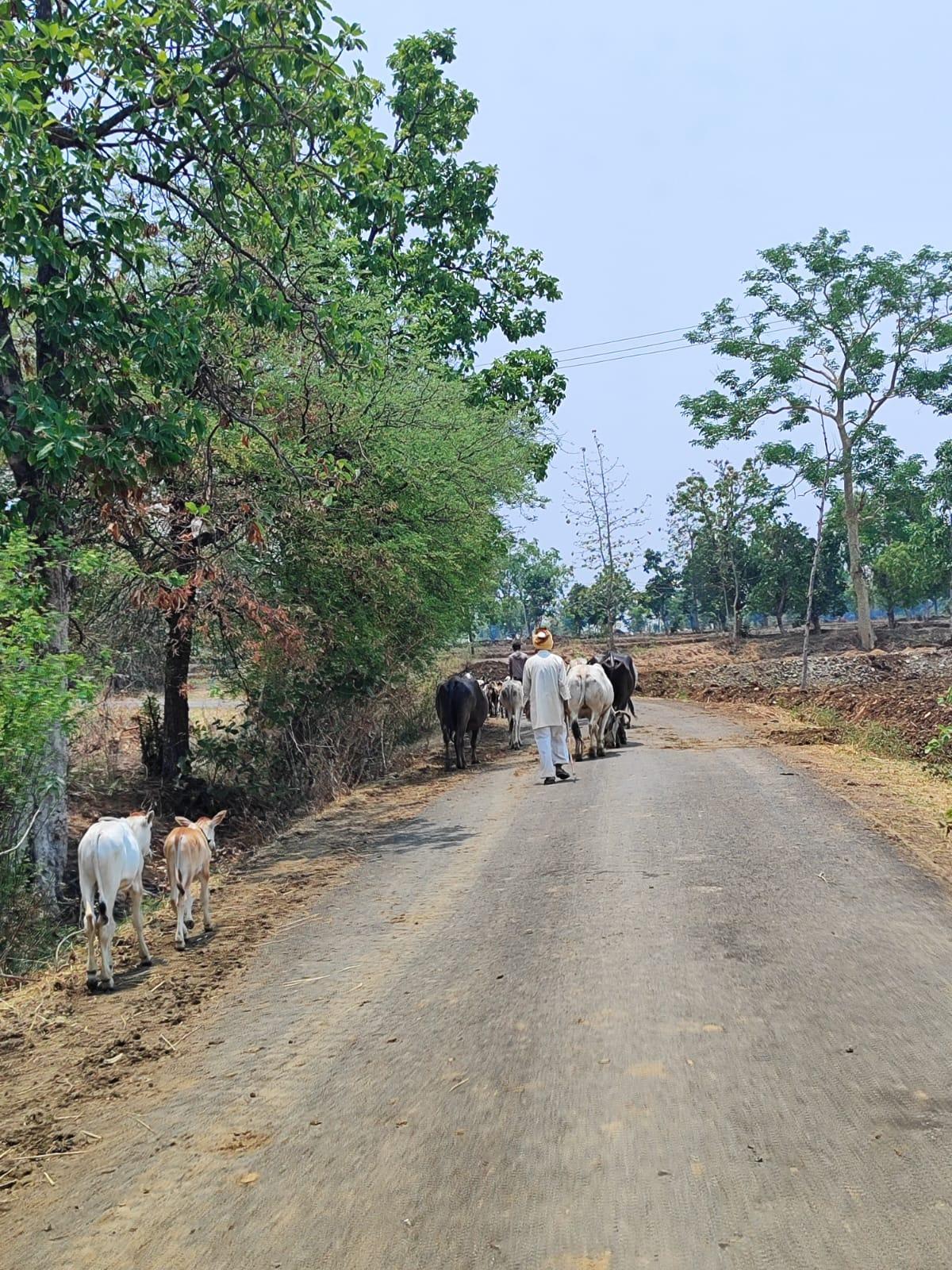Contents
- Livestock
- A. Livestock Numbers
- B. Artificial Insemination
- Dairy
- A. Annual Milk Collection
- B. Average Milk Collected Per Day
- C. Dairy Cooperative Societies
- D. Cold Storage Units
- E. Cold Storage Capacity
- Changing Practices in Livestock Rearing
- Pastoralist Communities in the District
- Veterinary Care
- A. Veterinary Facilities
- B. Type of Veterinary Facilities
- Fisheries
- A. Area for Fisheries
- B. Lakes, Ponds, or Reservoirs Suitable for Fishing
- C. Length of Rivers
- D. Groundwater Fish Production
- E. Fish Seeds Used
- F. Price Received by Producers for Fish Caught
- G. Fish Business Cooperatives
- Sources
GONDIA
Livestock & Fisheries
Last updated on 23 July 2025. Help us improve the information on this page by clicking on suggest edits or writing to us.
Livestock
Gondia is home to several indigenous breeds, such as the Kathani cow. The Kathani is a native breed unique to eastern Vidarbha. In recent years, there has been a shift towards goat farming, dairy farming, and poultry farming as more individuals engage in agricultural activities. The Kathani cattle breed was officially recognized after a survey conducted by the National Bureau of Animal Genetic Resources (NBAGR).
Dairy
Changing Practices in Livestock Rearing
In the Gondia district, livestock rearing has evolved significantly from traditional manual methods to modern, technology-driven practices. Earlier, animals such as cows, bullocks, goats, sheep, and chickens were raised using natural feed like fresh grass, vegetables, and household scraps, making farming cost-effective but labor-intensive. With scientific advancements, high-yield foreign breeds have been introduced, and tractors have largely replaced bullocks in agriculture, reducing indigenous breed populations.
Initiatives like the Pashu Sakhi model have improved livestock management, especially in goat farming, by training women in better rearing techniques. However, the district faces challenges in fodder availability due to mono-cropping, leading farmers to use alternative feeds like crushed rice bran (kukus) and crop residues. Traditional methods such as the Dongi, where stale food is mixed with kukus to feed cattle, and group grazing, where Kathani cattle graze on forest lands with minimal input costs, remain in practice.
Grazing is facilitated by Aakhar/Gohan, communal grazing areas managed by Gram Panchayats or the forest department, where herders (Gayakis) oversee livestock. Gayakis face increasing challenges, including shrinking grazing lands, predator threats, water scarcity, and irregular payments, leading to a decline in their numbers and smaller herd sizes. In response, cattle owners now form small groups to share livestock management responsibilities.
Traditional training tools like Gedaga/Badaga, a wooden neckpiece for bull calves, help prepare them for agricultural work. Despite modernization, many traditional practices continue to shape livestock management in the district.

Pastoralist Communities in the District
In the Gondia district, the Gowari community is a prominent pastoralist group. Traditionally, this community has been engaged in cattle rearing and agriculture, which are integral to their lifestyle. Locals say that in the past, they practiced a semi-nomadic way of life, migrating to various locations in search of fodder for their cattle. However, due to modern education and business opportunities, many have now settled in specific areas while maintaining their cultural heritage.
Additionally, the district has seen initiatives like the Pashu Sakhi program, which, according to locals, has empowered women within pastoralist communities by providing them with training and resources to improve livestock management practices. This community-based approach has reportedly enhanced livelihoods for goat farmers and increased the overall goat population in Gondia. The combination of traditional practices and modern support systems continues to shape the lives of pastoralist communities in the region.
Veterinary Care
The Animal Husbandry Department in Gondia plays a crucial role in both improving livestock quality and providing veterinary care. Its two main functions are: (i) enhancing existing livestock through scientific breeding of cattle, sheep, poultry, and pigs, and (ii) treating sick animals and preventing contagious diseases. This includes initiatives such as the castration program to eliminate scrub bulls and offering technical advice to private enterprises and farmers.
Some of the veterinary services in the district include:
- Animal Care Clinic, Arjuni Morgaon,
- District Veterinary Hospital, Dr. Ambedkar Square in Kudwa.
- Sai Veterinary Clinic, Balaghat, is known for its quality pet care services.
- NEET Pet Clinic & Pet Care
Fisheries
Gondia district, previously part of Bhandara district, was historically known for its abundant aquatic resources, primarily influenced by the Wainganga River and its tributaries, including the Bagh, Chulband, Panjoli, and Bawanthari rivers. According to the Bhandara District Gazetteer, the region had nearly 500 kilometers of flowing water, supplemented by reservoirs, tanks, and ponds covering approximately 28,000 hectares, with around 14,000 water resource units of varying sizes.
Of these, 3,200 units spanning about 6,000 hectares were under the jurisdiction of the Zilla Parishad, while 92 units covering approximately 8,000 hectares were managed by the State Government. Additionally, nearly 300 privately owned tanks, covering around 6,320 hectares, were utilized for pisciculture. The remaining tanks and ponds primarily supported irrigation for paddy fields, with some also used for fish farming.
At the time, the district was in the process of developing six large irrigation reservoirs and 50 small irrigation tanks, each measuring around 40 hectares or more, which were expected to contribute to fisheries development.
The riverine ecosystem supported various local fish species, including Tambir (Labeo fimbriatus), Wadis (Puntius tor), Kolshi (Puntius kolus), Shivda (Wallago attu), Wagur (Clarias magur), Bodth (Bagarius bagarius), and Tamboo (Anguilla bengalensis). Additionally, prawn fisheries, particularly Macrobrachium malcolmsonii, played a role in the local economy. The total riverine fish catch was estimated at nearly 100 metric tonnes per year, with prawn catches contributing approximately 10 metric tonnes.
Sources
Maharashtra State Government. Fisheries, Bhandara District Gazetteer. gazetteers.maharashtra.gov.in, Bhandara District, Maharashtra.https://gazetteers.maharashtra.gov.in/cultur…
Last updated on 23 July 2025. Help us improve the information on this page by clicking on suggest edits or writing to us.